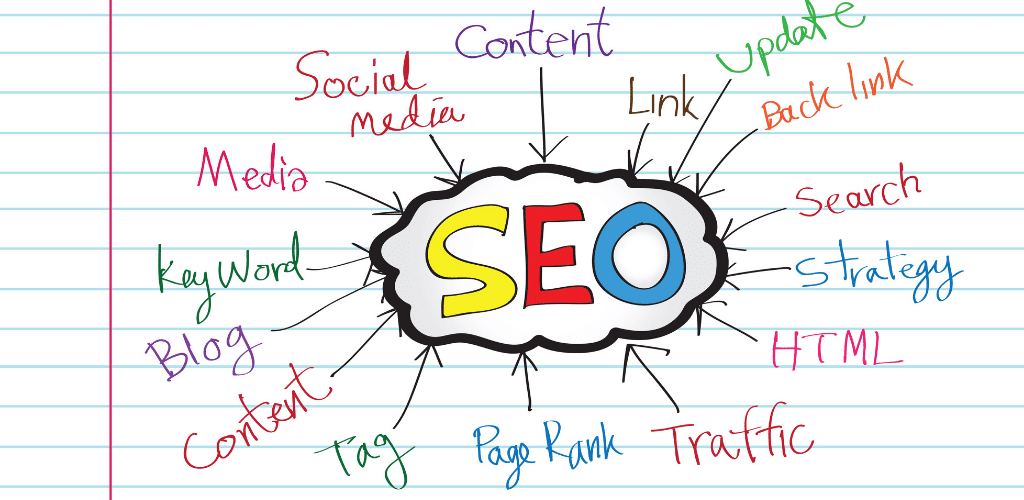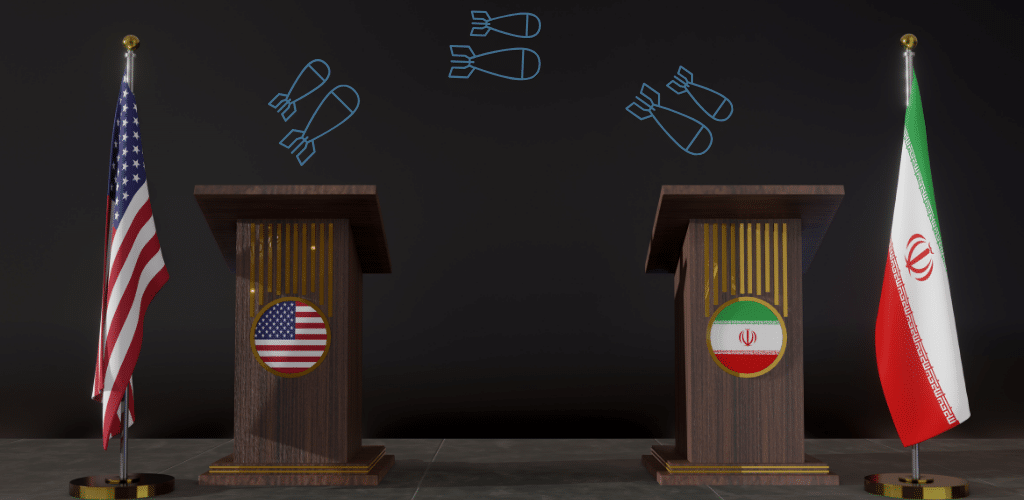Table of Contents
Decoding the Battle: Native Ads vs Banner Ads – Which Reigns Supreme in the Digital Marketing Arena?
In the fast-evolving realm of digital marketing, the clash between native ads and banner ads has sparked a heated debate among marketers worldwide. ‘Decoding the Battle: Native Ads vs Banner Ads – Which Reigns Supreme in the Digital Marketing Arena?’ delves into this ongoing marketing showdown, shedding light on the strengths and weaknesses of each contender.
While banner ads have long been a staple in digital advertising, the rise of native ads has introduced a new player to the game, promising a more seamless and integrated user experience. As brands navigate these two advertising formats, the question remains: which one truly dominates the digital landscape?
Join us as we unravel the intricacies of native ads vs banner ads, exploring their impact on audience engagement, conversion rates, and overall marketing success. Whether you’re a seasoned marketer or a budding entrepreneur, this article will equip you with the insights needed to make informed decisions in the ever-changing world of digital marketing.
Understanding the Differences between Native Ads and Banner Ads
When delving into the world of digital advertising, it’s essential to grasp the fundamental differences between native ads vs banner ads. Native ads are designed to blend seamlessly with the platform on which they appear. They mimic the look and feel of the surrounding content, whether it be an article, video, or social media post. This integration helps create a less intrusive experience for the user while delivering relevant promotional material. The primary goal of native ads is to engage users by providing content that is not immediately recognized as advertising, thus enhancing user experience and encouraging interaction.
In contrast, banner ads are more traditional in their approach. They typically appear as rectangular graphics placed at the top, side, or bottom of a web page. These ads are often static or animated and are designed to capture attention quickly. However, their overt nature can lead to banner blindness, where users subconsciously ignore these ads due to their ubiquitous presence across the internet. The effectiveness of banner ads often hinges on bold visuals and catchy headlines, which aim to provoke immediate action from viewers.
The key distinction lies in user perception and engagement. Native ads often generate higher engagement rates because they offer value through relevant content, while banner ads can struggle to attract attention due to their interruptive nature. Understanding these differences is critical for marketers as they strategize their advertising efforts, ensuring they select the format that aligns best with their campaign objectives and target audience preferences.
Effectiveness Comparison: Native Ads vs Banner Ads
The effectiveness of advertising formats is measured primarily through engagement metrics, conversion rates, and overall return on investment (ROI). Research indicates that native ads generally outperform banner ads in terms of user engagement. According to various studies, native ads can achieve click-through rates that are significantly higher than those of banner ads, which often languish below 0.1%. This stark difference can be attributed to the non-disruptive nature of native advertising, which allows brands to connect with audiences in a more meaningful way.
Moreover, the context of native ads often enhances their effectiveness. By placing advertisements within engaging content, brands can tell a story or convey a message that resonates with the audience. This storytelling approach not only captures attention but also builds trust and brand loyalty. In contrast, banner ads often focus on immediate calls to action, which can lead to high bounce rates if the message does not align with user intent. The difference in effectiveness is not just about clicks; it’s also about the quality of those interactions and the potential for conversion.
That said, banner ads still play a crucial role in a comprehensive digital marketing strategy. Certain campaigns focusing on brand awareness or product launches can benefit from the broad visibility that banner ads provide. While they may not engage users as deeply as native ads, their ability to reach a large audience quickly is an undeniable advantage. Ultimately, the effectiveness of each format depends on the specific goals of the marketing campaign and how well each ad strategy aligns with the target audience’s behaviors and preferences.
Consumer Engagement with Native Ads and Banner Ads

Consumer engagement is a pivotal aspect of any advertising strategy, as it determines how effectively a brand communicates its message to its audience. Native ads, due to their inherent design and placement, tend to generate more engagement. They often invite users to interact with content that feels less like an advertisement and more like a natural extension of their browsing experience. Studies show that consumers are more likely to share and engage with native ads, which can lead to increased brand visibility and affinity over time.
On the other hand, banner ads often face challenges in engagement. Their static or animated nature can sometimes overwhelm the user, leading to disengagement. Many users have become adept at ignoring these ads, often viewing them as mere interruptions. However, advancements in technology and design have led to more creative banner ads that attempt to capture attention through bright colors and dynamic content. Despite these efforts, the inherent interruptive quality of banner ads often results in lower engagement rates compared to their native counterparts.
Understanding consumer behavior is crucial for marketers. Engaging an audience requires not only delivering the right message at the right time but also presenting it in a format that resonates with users. Native ads excel in this regard by allowing brands to weave their messages into the content consumers are already interested in. This approach fosters a sense of relevance and connection, ultimately leading to increased engagement levels. Conversely, while banner ads can still be effective in certain contexts, marketers must recognize the limitations of this format and strategize accordingly to maximize consumer interaction.
Native Ads vs. Banner Ads: Cost and ROI Analysis
When evaluating advertising options, cost and return on investment are critical considerations for marketers. Native ads often come with a higher upfront cost compared to banner ads. The creation of high-quality native content requires not only skilled writers and designers but also a strategic approach to ensure the content resonates with the target audience. However, despite the initial investment, many marketers find that native ads yield a higher ROI due to their ability to engage users effectively and drive conversions.
In comparison, banner ads generally have lower production costs, making them an attractive option for brands with constrained budgets. The simplicity of design and straightforward messaging allows for quick production cycles. However, the lower engagement rates associated with banner ads can lead to diminished ROI over time. Brands may find themselves spending more on retargeting and adjustments to improve performance, which can offset the initial savings in production costs.
A comprehensive analysis of costs and ROI should take into account not only direct monetary returns but also long-term brand equity and customer loyalty. Native ads, with their ability to foster deeper connections with consumers, can enhance brand perception and loyalty over time. This factor is particularly valuable in today’s competitive landscape, where building lasting relationships with customers is paramount for sustained business success. Ultimately, while both formats come with their own set of costs and potential returns, native ads often prove to be a more effective investment in the long run.
Native Ads and Banner Ads Placement Strategies
Placement strategies for native ads and banner ads significantly influence their effectiveness. For native ads, strategic placement is crucial to ensure that the content aligns with the surrounding media. This often requires a deep understanding of the target audience and their content consumption habits. Placing native ads within relevant articles or alongside engaging videos can enhance visibility and encourage users to engage with the content. The key is to ensure that the native ad does not disrupt the user experience but rather complements it, leading to increased interaction and conversion rates.
In contrast, banner ads require a different approach to placement. Due to their nature as interruptive advertisements, it is essential to position them where they can achieve maximum visibility without overwhelming the user. This often involves using prime real estate on a website, such as the top of the page or within the sidebar. The challenge lies in striking a balance between visibility and user experience. Overly aggressive placement can lead to ad fatigue, causing users to ignore or block banner ads altogether. Therefore, testing various placements and analyzing performance metrics are critical to optimizing banner ad strategies.
Moreover, both ad formats benefit from utilizing data analytics for effective placement. Understanding user behavior, preferences, and demographics can inform placement decisions, leading to improved performance. For native ads, leveraging insights about content consumption patterns can guide brands in selecting the most effective channels and formats. For banner ads, data-driven strategies can optimize placement across various platforms, ensuring ads reach the right audience at the right time. By employing strategic placement tactics, marketers can enhance the effectiveness of both native and banner ads, driving better results for their campaigns.
Case Studies: Successful Campaigns using Native Ads and Banner Ads
Examining real-world case studies can provide valuable insights into the effectiveness of native and banner ads. One notable example of a successful native ad campaign is the “Fandango’s Movie Club” initiative, which utilized native content to promote film releases. By collaborating with popular entertainment websites, Fandango created engaging articles and video content that seamlessly integrated promotional messages about upcoming movies. This approach not only captured the attention of movie enthusiasts but also resulted in a significant increase in ticket sales, demonstrating the power of native advertising in driving consumer action.
On the other hand, the “Old Spice” campaign serves as a prime illustration of effective banner advertising. Old Spice utilized humorous and eye-catching banner ads that featured the brand’s iconic spokesperson. These ads were strategically placed on various websites frequented by their target demographic—young men. The campaign went viral, resulting in a dramatic increase in brand awareness and sales. The success of this campaign highlighted how innovative and creative banner ads can still capture attention and engage consumers effectively.
Another compelling case study involves the “Coca-Cola” Share a Coke campaign, which showcased the effectiveness of both ad formats. Coca-Cola leveraged native ads to promote personalized bottles with consumers’ names, creating engaging content that resonated with audiences. Simultaneously, they utilized banner ads to drive traffic to their website and encourage social sharing. The dual approach resulted in widespread brand engagement and significant increases in sales, demonstrating how a well-rounded advertising strategy can yield impressive results.
Future Trends: The Evolution of Native Ads and Banner Ads

As digital marketing continues to evolve, so too do the strategies surrounding native ads and banner ads. One significant trend is the increasing use of artificial intelligence and machine learning to optimize ad placement and targeting. Brands are leveraging advanced algorithms to analyze consumer behavior and preferences, allowing for more precise targeting of ads. This trend is particularly beneficial for native advertising, where understanding user interests can greatly enhance engagement and conversion rates.
Additionally, the rise of mobile consumption is reshaping the landscape for both ad formats. As more users engage with content on mobile devices, advertisers are adapting their strategies to ensure that both native and banner ads are optimized for mobile viewing. This includes creating responsive designs that maintain the integrity of the ad formats across different screen sizes. The shift towards mobile-first strategies is expected to continue, highlighting the need for advertisers to stay ahead of the curve in their ad placements and designs.
Furthermore, the increasing demand for transparency and authenticity in advertising is influencing how brands approach both native and banner ads. Consumers are becoming more discerning and are seeking out content that feels genuine and trustworthy. This trend is prompting brands to focus on creating high-quality, relevant content in their native ads while ensuring that banner ads are not overly aggressive or misleading. As the digital advertising landscape continues to evolve, marketers must remain agile and innovative, embracing new technologies and consumer preferences to stay competitive.
Choosing the Right Ad Format for Your Marketing Goals
Selecting the appropriate ad format is crucial for achieving specific marketing objectives. When considering native ads, brands should evaluate their goals concerning audience engagement and content integration. Native ads are particularly effective for campaigns that aim to build brand awareness, foster consumer trust, and drive engagement through valuable content. If the goal is to tell a compelling story or provide useful information that resonates with the audience, native advertising may be the ideal choice.
Conversely, if the primary objective is immediate visibility and direct response, banner ads may be more suitable. For promotional campaigns, limited-time offers, or events that require quick action, banner ads can effectively capture attention and drive traffic. Their ability to reach a broad audience quickly can be advantageous in scenarios where speed is essential. Marketers must assess their campaign timelines and desired outcomes to determine which format aligns best with their strategic goals.
Ultimately, a successful advertising strategy often involves a combination of both native and banner ads. By leveraging the strengths of each format, brands can create a comprehensive approach that maximizes reach and engagement. Combining the storytelling capabilities of native ads with the visibility of banner ads can create a well-rounded marketing strategy that resonates with diverse audience segments. As digital marketing continues to evolve, brands should remain flexible and open to experimenting with both formats to optimize their campaigns effectively.
Conclusion: Which Ad Format Reigns Supreme in the Digital Marketing Arena?
In the ongoing battle between native ads vs banner ads, it becomes clear that each format has its unique advantages and challenges. Native ads excel in creating a seamless user experience, fostering engagement, and building brand loyalty through relevant content. They are particularly effective for campaigns focused on storytelling and user interaction, making them a powerful tool in the digital marketer’s arsenal.
On the other hand, banner ads offer immediate visibility and can be highly effective for driving quick responses. Their lower production costs and ability to reach wide audiences make them a valuable option for brands looking to promote time-sensitive offers or events. However, marketers must navigate the challenges of banner blindness and engagement fatigue to ensure these ads remain effective.
Ultimately, the choice between native ads vs banner ads should be driven by the specific goals of a marketing campaign and the preferences of the target audience. A thoughtful approach that considers the strengths of both formats, combined with data-driven insights, can lead to a successful digital marketing strategy. As the landscape continues to evolve, staying informed about trends and consumer behavior will be key to determining which ad format reigns supreme in the digital marketing arena.







